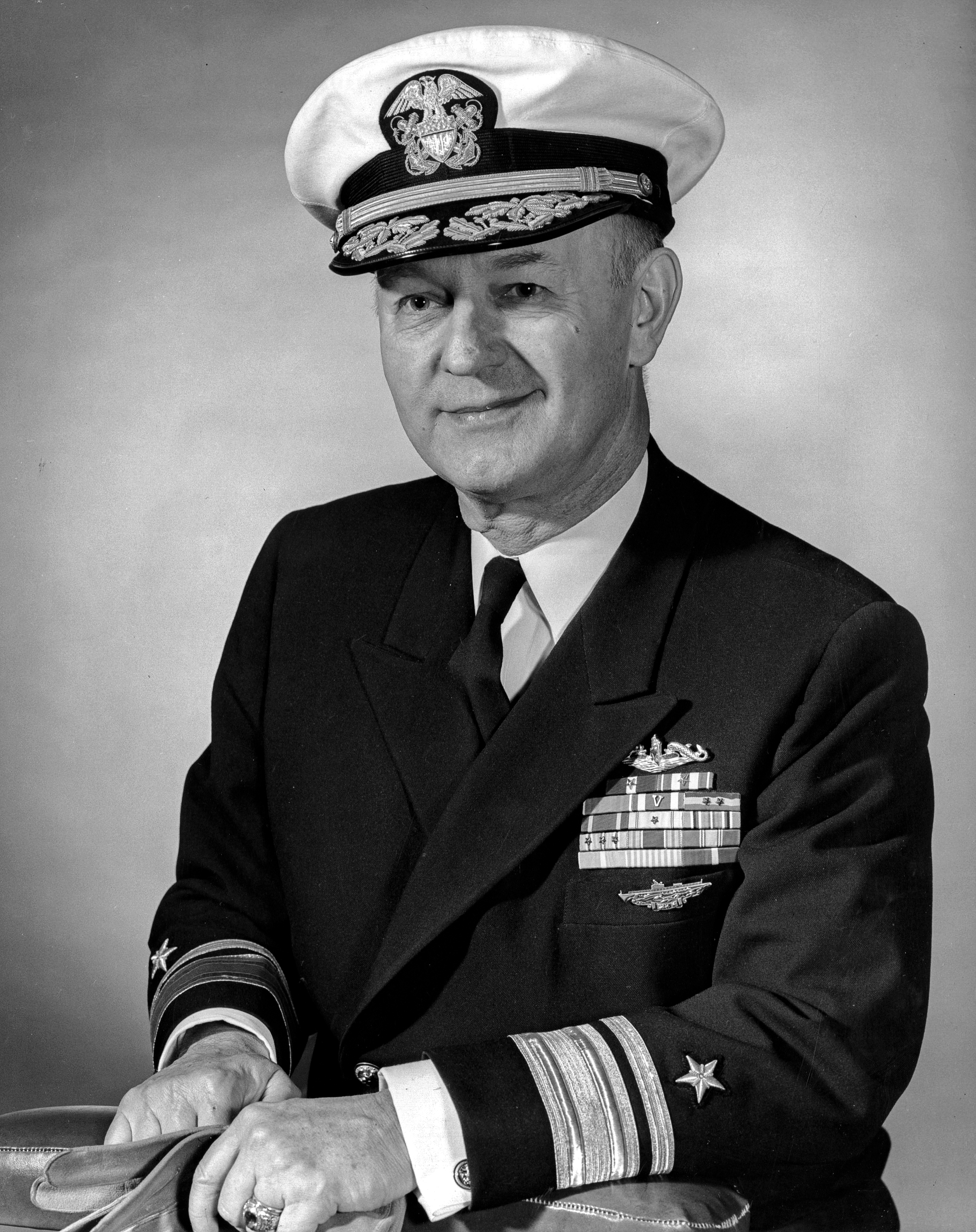
Benson, Roy S., Rear Adm., USN (Ret.)
(1906–1995)
In the first volume of Admiral Benson's oral history, he recalls his early years with his Swedish family in New Hampshire, and his days at the Naval Academy, where athletics were not of as much interest as music. Following graduation in 1929, he served first in the battleship New York (BB-34), and then on the destroyer Smith Thompson (DD-212) on the Asiatic Station. Benson gives a real feel for the flavor of China in the mid-1930s, and it is here that he has his first experience with what is to become his specialty--submarines. He attends submarine school and has various duties before joining the Nautilus (SS-168), in which he served during that submarine's presence at the Battle of Midway. Later, as commanding officer of the USS Trigger (SS-237) his ship was credited with sinking almost 30,000 tons of Japanese shipping. Some key subjects discussed by Admiral Benson include the sinking of the Cochino (SS-345) while on an interesting mission in 1949, magnetic exploders, the use of submarines in antisubmarine warfare, and submarine tactics and safety measures. The last assignment discussed is Benson's duty in the unpopular billet of Director of Public Information for the Navy at the beginning of the Korean War. He provides anecdotes about many famous officers he came into contact with, including Forrest Sherman, Page Smith, George Marshall, William Fechteler, and Hyman Rickover.
Admiral Benson begins the concluding volume of his memoir by describing his service in command of the attack transport Bayfield (APA-53) in 1953-1954, followed by command of Amphibious Squadron Six. At the time, duty in the amphibious forces was not considered particularly career-enhancing for naval officers, but it proved to be so in the case of Benson, because he was subsequently selected for flag rank during the course of a tour of duty in charge of Navy recruiting at the Bureau of Naval Personnel. As a rear admiral, he was a cruiser division commander in the Pacific and then Deputy Commander and Chief of Staff of the Navy's Military Sea Transportation Service. His telling of that period provides a useful description of the interplay between the Navy and the U.S. merchant marine. One of the admiral's most enjoyable tours was as Commander Submarine Force Pacific Fleet from 1960 to 1962, at a time when nuclear submarines were still a novelty in that ocean. Then followed a five-year tour on the OpNav staff as Assistant Vice Chief of Naval Operations/Director of Naval Administration. This is unusual oral history material because of the considerable detail provided on the routine aspects of naval administrative matters. In many cases, oral histories concentrate on high-level decision-making, but the reality is that the paperwork must still be accomplished, and Admiral Benson provides rare insight into that aspect. The volume concludes with his description of service as Commandant First Naval District prior to his retirement from active duty in 1969.
About Volume I
Based on seven interviews conducted by John T. Mason, Jr., from March 1980 through April 1980. The volume contains 459 pages of interview transcript plus an index. The transcript is copyright 1984 by the U.S. Naval Institute; the restrictions originally placed on the transcript by the interviewee have since been removed.
About Volume II
Based on 11 interviews conducted by John T. Mason, Jr., from April 1980 through August 1980. The volume contains 486 pages of interview transcript plus an index. The transcript is copyright 1987 by the U.S. Naval Institute; the restrictions originally placed on the transcript by the interviewee have since been removed.


